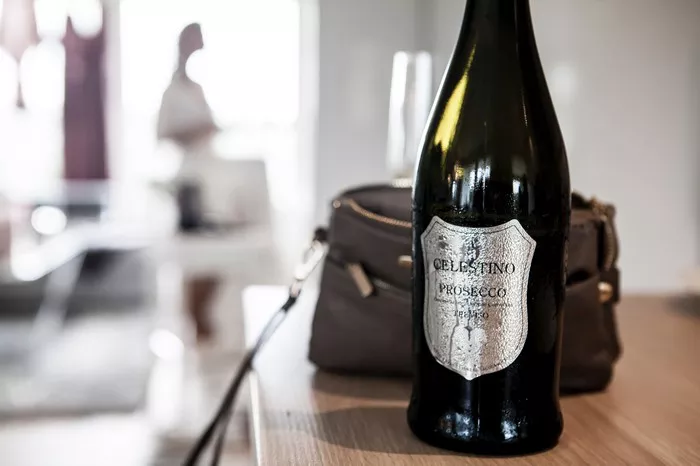The effervescent charm of Prosecco has a way of enlivening any occasion, from celebratory to casual. Yet, once the cork is popped and the bubbles have danced their way into our glasses, the question arises: how can we keep that delightful fizz intact for another day? In this article, we unveil the art of storing Prosecco after opening, exploring the science behind its effervescence, understanding the factors that affect its freshness, and sharing practical tips to ensure that every sip remains a celebration of sparkle.
The Science Behind Prosecco’s Effervescence
Prosecco’s signature effervescence is a result of dissolved carbon dioxide (CO2) gas under pressure. During the winemaking process, secondary fermentation occurs in a sealed environment, allowing CO2 to infuse the wine. When the bottle is opened, the pressure is released, causing the CO2 to escape in the form of bubbles.
The fine art of crafting Prosecco involves striking a delicate balance between preserving the desired level of carbonation and delivering the desired flavors and aromas. To savor the full charm of Prosecco’s bubbles, proper storage is essential.
Factors Affecting Prosecco’s Freshness After Opening
The preservation of Prosecco’s effervescence post-opening is influenced by several factors:
Temperature: Temperature plays a significant role in maintaining the fizz of Prosecco. Cooler temperatures slow down the escape of CO2, while warmer temperatures accelerate it.
Air Exposure: Exposure to air speeds up the loss of carbonation in Prosecco. The more air the wine comes into contact with, the faster the bubbles will diminish.
Seal Integrity: The quality of the closure used to reseal the bottle after opening impacts how well the CO2 is retained. A secure and airtight seal is crucial.
Time: The passage of time is an inevitable factor in the decline of Prosecco’s fizz. The longer the bottle remains open, the more carbonation will be lost.
Prosecco’s Shelf Life After Opening
After uncorking a bottle of Prosecco, its optimal freshness lasts for about one to three days when stored properly. During this window, the wine will maintain its fizz and flavor profile relatively well. However, it’s worth noting that Prosecco will not retain its full effervescence beyond a day or two.
To fully appreciate the lively bubbles and vibrant flavors of Prosecco, it’s advisable to consume it shortly after opening. If you don’t plan to finish the bottle within a few days, it’s best to explore preservation techniques to extend its drinkability.
Practical Tips for Storing Opened Prosecco
To preserve the sparkle and flavor of opened Prosecco, follow these practical tips:
Re-Cork Tightly: As soon as you’re finished pouring, re-cork the bottle as tightly as possible to minimize air exposure. If the original cork won’t fit securely, consider using a wine stopper specifically designed for sparkling wines.
Keep It Cold: Store the resealed bottle in the refrigerator, ideally at a temperature between 35°F and 45°F (1.7°C to 7.2°C). Cooler temperatures slow down the loss of carbonation.
Avoid Shaking: While you might be tempted to shake the bottle to revive the bubbles, this can cause the CO2 to escape even faster. Instead, gently turn the bottle upside down to reduce air contact with the wine.
Use Preservation Tools: Various preservation tools are available to help extend the life of opened wine. VacuVin wine stoppers and systems that pump out air are designed to maintain freshness, although they may be less effective for preserving carbonation in sparkling wines.
Consider a Sparkling Wine Saver: Specialized sparkling wine stoppers equipped with pressure valves can help maintain some of the CO2. These stoppers are designed to fit Champagne and sparkling wine bottles.
Small Bottles: Some wineries offer Prosecco in smaller, single-serving bottles. If you frequently find yourself with leftover Prosecco, consider choosing these smaller formats to minimize waste.
Enjoy It All: Given Prosecco’s shorter shelf life after opening, a delightful approach is to gather friends and enjoy the entire bottle in one sitting.
Cooking with Leftover Prosecco
If you find yourself with a bit of leftover Prosecco that has lost its fizz, don’t despair. Even flat Prosecco can lend its delightful acidity and subtle fruitiness to a variety of culinary creations:
Sauces: Use flat Prosecco as a base for sauces, reduction glazes, or poaching liquids for seafood.
Desserts: Incorporate flat Prosecco into sorbets, fruit compotes, or dessert syrups for an extra layer of flavor.
Marinades: The acidity of flat Prosecco can tenderize meat and add depth to marinades.
Cocktails: While it may have lost its effervescence, Prosecco can still be used in cocktails that don’t require bubbles, such as sangrias or spritzers.
In Conclusion
Prosecco’s bubbly charm delights the senses and adds a touch of celebration to any moment. To fully appreciate its effervescence, it’s important to understand the factors that affect its preservation after opening. By resealing the bottle tightly, storing it at a cool temperature, and minimizing air exposure, you can extend the life of the bubbles and maintain the vibrant flavors that Prosecco is known for.
While Prosecco’s freshness is best enjoyed within a few days of opening, it’s still possible to make the most of any leftover wine. Whether you’re indulging in a leisurely afternoon or raising a glass in the company of friends, the key to storing Prosecco after opening lies in preserving its sparkle—one bubble at a time.


